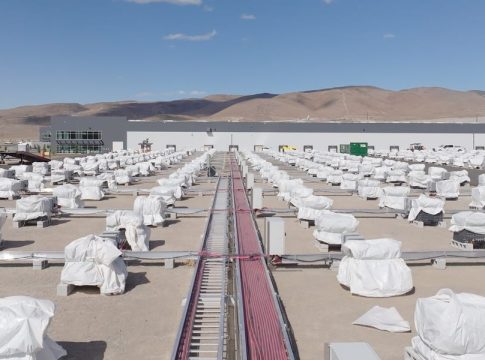The Intersection of AI and Battery Recycling: Redwood’s Bold New Venture
In a striking convergence of technology sectors, Redwood Materials is tackling the increasing energy demands fueled by the burgeoning field of artificial intelligence (AI). Founded by JB Straubel, former CTO of Tesla, Redwood has established a unique niche that combines battery recycling with energy storage solutions, directly responding to the burgeoning needs of AI-driven data centers.
A Desert Innovation Hub
Located in the high desert east of Reno, Nevada, Redwood Materials operates in a fascinating environment. Surrounded by massive data centers, including a sprawling Google complex, the startup is poised to bridge significant gaps in energy supply. The ongoing explosion in demand for data centers—largely driven by the computational needs of AI—has dramatically increased power consumption, posing challenges for existing infrastructure.
Recognizing this, Redwood has unveiled Redwood Energy, a new initiative designed to transform used electric vehicle (EV) batteries into valuable energy storage systems. This move signifies a strategic pivot toward harnessing the second-life value of batteries that still possess substantial capacity.
Trading Old Batteries for New Energy Solutions
Each year, Redwood processes over 20 gigawatt-hours (GWh) of used lithium-ion batteries, equivalent to what could power around 250,000 EVs. What’s impressive is that many of these batteries retain 50% to 80% of their original capacity, making them prime candidates for stationary energy storage. This newly repurposed energy supports not only industrial customers but also the grids essential for powering data-driven AI infrastructures.
Its flagship deployment—a 12 megawatt (MW) battery system capable of storing 63 megawatt-hours (MWh)—is already operational, powering a 2,000-GPU data center for AI infrastructure firm Crusoe. This project is being touted as the largest second-life battery deployment globally, shedding light on Redwood’s innovative approach.
An Eco-Friendly Infrastructure Solution
As Redwood Energy positions itself in the market, it offers a compelling alternative to fossil fuel energy sources. The firm’s systems are not only less expensive than new lithium-ion installations but also avoid the lengthy permitting processes typically associated with constructing energy infrastructure.
Key features of Redwood’s model include:
- Sustainability: By capitalizing on recycled materials, Redwood contributes to a circular economy, reducing waste and carbon emissions.
- Automation & Diagnostics: The company employs advanced software to assess the viability of batteries for reuse, ensuring that every pack is integrated efficiently into their energy storage solutions.
Chris Evdaimon from Baillie Gifford, a major investor in Redwood, applauded the company for its timing and opportunity, emphasizing the significant revenue potential of its innovative business model.
Scaling for Tomorrow’s Energy Needs
Redwood is eyeing extensive growth in the coming years. With over 100,000 EVs expected to reach the end of their lifecycle this year alone and a projected annual increase of 150 GWh in latent energy storage capacity, the scale of opportunity is immense. The company aims to deploy 20 GWh of second-life battery storage by 2028, setting the stage for high-demand applications like stabilizing energy grids and powering AI supercomputers.
By effectively melding artificial intelligence with sustainable energy solutions, Redwood Materials is poised to play a crucial role in shaping the future of energy and technology. As AI and renewable resource demands grow, Redwood’s approach could emerge as a cornerstone in combatting both energy challenges and environmental concerns, paving the way for a more sustainable technological landscape.

Writes about personal finance, side hustles, gadgets, and tech innovation.
Bio: Priya specializes in making complex financial and tech topics easy to digest, with experience in fintech and consumer reviews.

